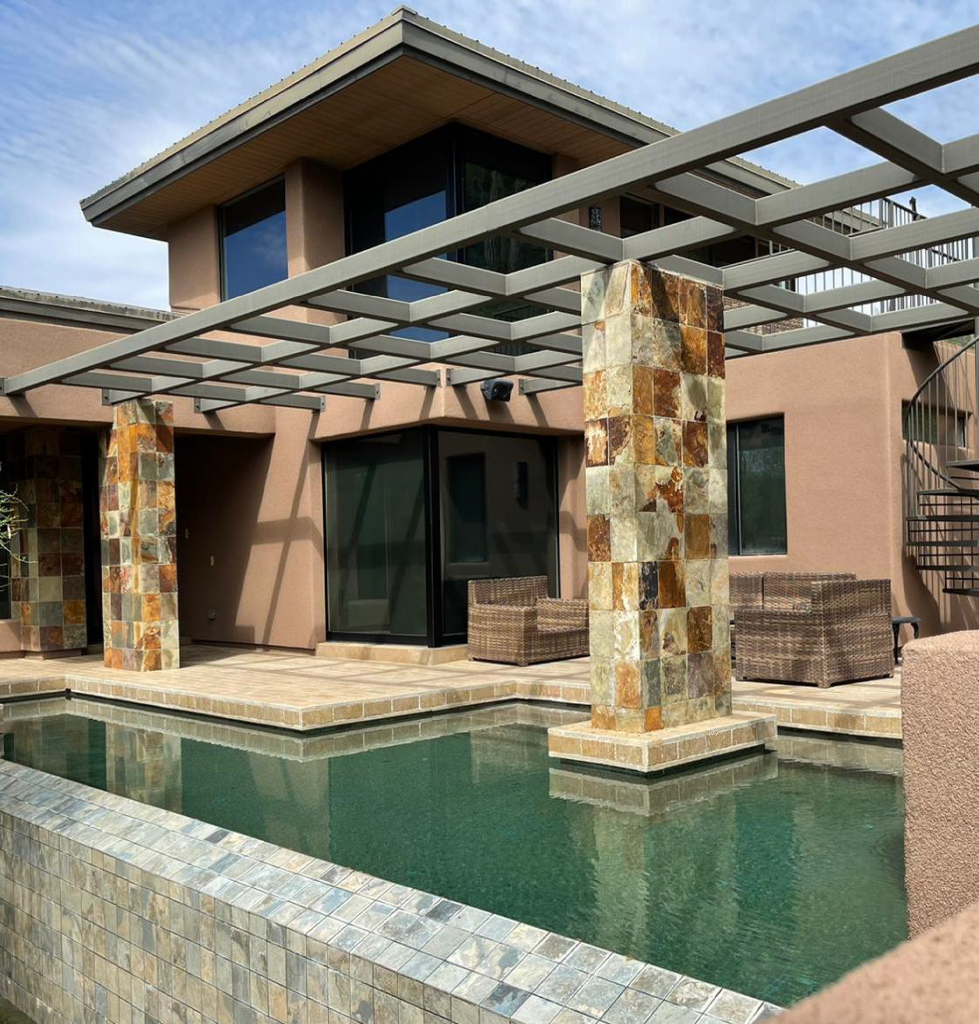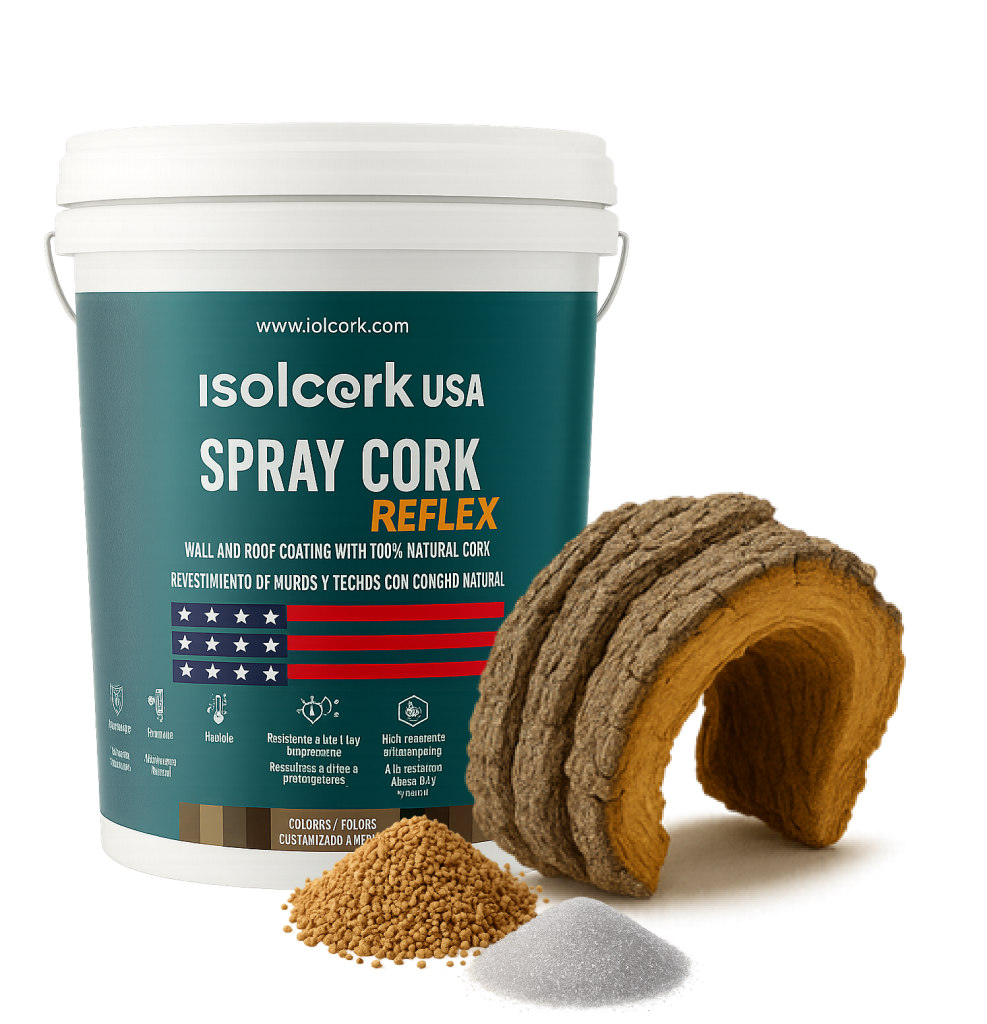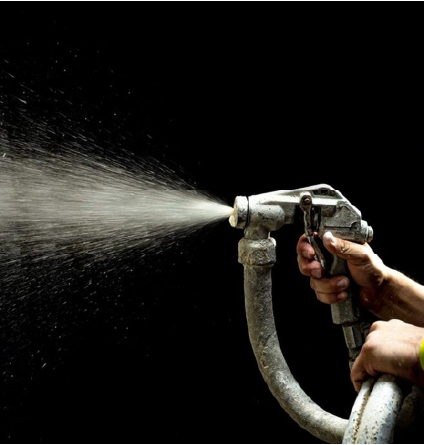SPRAY CORK
Thermal, colored, and environmentally friendly coating for finishing facades, mortars, EIFS systems, and roofs.


Description
Thermal coating that offers a variety of options to suit the tastes of professionals and guarantee high performance, thanks to the natural properties of cork. It stands out for its breathability, which allows
surfaces to breathe and guarantees high thermal insulation, taking advantage of cork’s ability to trap and immobilize air in the cavities of its honeycomb structure. Durability, elasticity, and fire resistance complete the functional properties of a sustainable product, capable of satisfying aesthetic tastes and needs and ensuring the thermal comfort that is an integral part of well- being in the home.
FEATURES OF SPRAY CORK
Performance
75 – 86 ft2 | 7 – 8 m2 (2 layers)
Thickness
0,12 in | 3 mm
Finish
Texturado
Colors
Carpeta de colores
Properties
– Contributes to insulation against cold and heat.
– Contributes to the hygrometric regulation of the environment, preventing mold and condensation dripping.
– The porosity of the product allows walls to breathe.Prevents the formation of cracks and fissures.
– Fire and high temperature resistant.
– Prevents thermal shock, dispersion, and overheating, contributing to energy savings.
– Excellent adhesion to surfaces such as metal, concrete, masonry, brick, plasterboard, fiber cement, and wood.
Uses
It can be used indoors or outdoors, on facades, EIFS systems, and roofs, whether in new construction or renovation projects.
Preparation
Mix Spray Cork for at least 3 minutes or until a homogeneous mixture is achieved, then add component 2 and dye, then mix for 3 more minutes.
Application
It is applied mechanically using a texture spraying machine. The application must be two cross coats and deliver a
minimum of 0.12 in (3 mm). Use nozzle No. 6.
Essays
ESSAYS
RESULTS
REGULATIONS
Water vapor transmisión test
36.8 (g/m2/24hr) | 5.29 (U.S. Perms)
ASTM E96 / E96M-22
Pull-out resistance
Metal/Stell 52.0 PSI | Stucco 9.2 PSI
ASTM D4541 – 17
Surface Burning Characteristics of Building
Materials
Class ‘A’
ASTM E84-21
Fungus resistance
No fungal growths observed
ASTM G21-15
Thermal conductivity
0.050 ± 0.002 (W/m*k)
EN 12664:2001-1
Water vapor transmission properties
Permanence W 1,525E-09 (kg/m2 S Pa)
Resistivity rv 3,39 (MN s/g m)
Resistance Rv 0,008 (MN s/g)
Permeability Ᵹ 3,507E-12 (Kg/m s Pa)
Water vapor resistance factor μ 0,626
NCh 2457 of 2014
Thermal conductivity
0.041 (W/m*k)
NCh 850 of 2008
Adhesion direct traction method
Zinc 0,36 (Mpa) / Fiber cement 0,33 (Mpa)
NCh 2471 of 2000
Sound absorption coefficient
Sound reflective 0,13 < ɑ < 0,32
Range 400 Hz hasta 2000 Hz
ISO 10354-2











